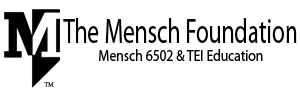Introduction:
A learning management system (LMS) is a software application for the administration, documentation, tracking, reporting and delivery of electronic educational technology (also called e-learning) courses or training programs.
Learning management systems range from systems for managing training and educational records to software for distributing online or blended/hybrid college courses over the Internet with features for online collaboration, school districts, and schools use LMSs to deliver online courses and augment on-campus courses. LMSs also act to augment the lessons the teacher is giving in a brick and mortar environment, not just replace them. Corporate training departments use LMSs to deliver online training, as well as to automate record-keeping and employee registration.
Purpose
The key to understanding the difference between LMS and other computer education terms is to understand the systemic nature of LMS. LMS is the framework that handles all aspects of the learning process. An LMS is the infrastructure that delivers and manages instructional content, identifies and assesses individual and organizational learning or training goals, tracks the progress towards meeting those goals, and collects and presents data for supervising the learning process of the organization as a whole. A learning management system delivers content but also handles registering for courses, course administration, skills gap analysis, tracking, and reporting.
Most LMSs are web-based to facilitate access to learning content and administration. They are also used by educational institutions to enhance and support classroom teaching and offering courses to a larger population of learners. LMSs are used by regulated industries (e.g. financial services and biopharma) for compliance training. Student self-service (e.g., self-registration on instructor-led training), training workflow (e.g., user notification, manager approval, wait-list management), the provision of on-line learning (e.g., computer-based training, read & understand), on-line assessment, management of continuous professional education (CPE), collaborative learning (e.g., application sharing, discussion threads), and training resource management (e.g., instructors, facilities, equipment), are all-important dimensions of learning management systems.
Some LMS providers include “performance management systems”, which encompass employee appraisals, competency management, skills-gap analysis, succession planning, and multi-rater assessments (i.e., 360 degree reviews). Modern techniques now employ competency-based learning to discover learning gaps and guide training material selection.
For the commercial market, some learning and performance management systems include recruitment and reward functionality.
LMS and CMS compared
The inappropriate use of LMS in the literature is perhaps most commonly associated with computer applications which are virtual learning environments (Course Management Systems, CMS). These systems are used primarily for online or blended learning, supporting the placement of course materials online, associating students with courses, tracking student performance, storing student submissions, and mediating communication between the students as well as their instructor. Some of this same functionality can be seen within LMSs as well, so it is understandable why confusion might exist about the differences between the two types of systems. However, the systemic nature of an LMS does not limit its functionality to that of a CMS. Example for LMS: Moodle (open source) Content Management System VS Learning Management System – An Overview
LMS and LCMS compared
The focus of an LMS is to deliver online courses or training to learners while managing students and keeping track of their progress and performance across all types of training activities. An LMS is not used to create course content.
By contrast, a learning content management system (LCMS) is a related software technology that provides a multi-user environment where developers, authors, instructional designers, and subject matter experts may create, store, reuse, manage, and deliver digital educational technology (also known as e-learning) content from a central object repository. LCMS focuses on the development, management and publishing of the content that will typically be delivered via an LMS. Users can both create and re-use content and reduce duplicated development efforts.
Rather than developing entire courses and adapting them to multiple audiences, an LCMS provides the ability for single course instances to be modified and republished for various audiences maintaining versions and history. The objects stored in the centralized repository can be made available to course developers and content experts throughout an organization for potential reuse and repurpose. This eliminates duplicate development efforts and allows for the rapid assembly of customized content. Some systems have tools to deliver and manage instructor-led synchronous and asynchronous online training based on learning object methodology.
LCMSs provide tools for authoring and reusing or re-purposing content (mutated learning objects, or MLOs) as well as virtual spaces for student interaction (such as discussion forums, live chat rooms and live web-conferences). LCMS technology can either be used in tandem with an LMS, or as a standalone application for learning initiatives that require rapid development and distribution of learning content.

